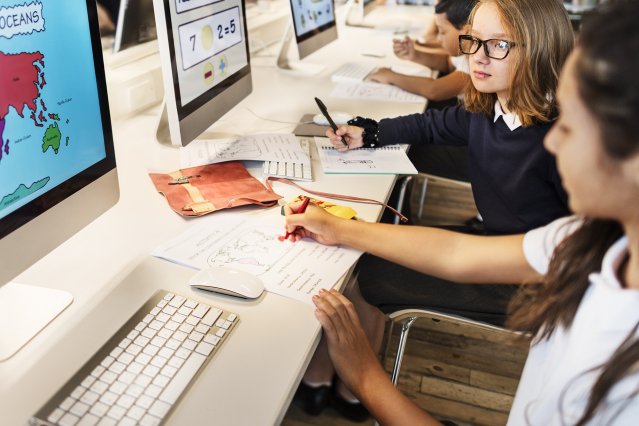One of the fears parents often bring up in relation to children and technology is the concern that they are exposed to it too early. Many experts have chimed in trying to define an ideal age at which to allow children to use technology, but it seems to be difficult to agree on how early is too early to get started.

Some parents, teachers and pediatricians advocate a late start, arguing that a frequent use of technology in early childhood interferes with the healthy development of children’s eyesight, brain, and fine motor skills.
However, forcing children to start later than their peers is anachronistic and may put them at a disadvantage: if technology is completely banned from their lives until after their formative years, they will be digital immigrants in a generation of digital natives.
Here are some reasons why it might be beneficial to reach a compromise between the need to preserve the children’s health and the increasing necessity of keeping them up to date with the latest technologies.
Making the kindergarten classroom more fun
Children today are naturally attracted to technology because they learn by example: the more they see their parents or older siblings using technology, the more they, too, will want to try. Excluding technology from a kindergarten classroom will make it an alien environment that does not feel like home as well as limit the teachers’ and children’s possibilities for learning and play (which, at this age, are one and the same).
If you invest in tablets with kindergarten-appropriate games and learning apps or smart boards rather than old-fashioned blackboards, for example, you will open up a new world of interesting activities for your children to do which will keep their attention and prepare them for the more extensive use of technology they will inevitably have to make in school.
Many children’s apps use adaptive learning to provide just the right level of challenge for each child: the software will make the game easy enough not to be frustrating, but just hard enough to be challenging and effective as a learning tool. This eases the burden on teachers, who can free up some time to give individual attention to those who need it while the rest of the class moves ahead or stays behind as much as they require.
But learning their ABCs and numbers through educational apps is only a fraction of what children can do if they have technology at their disposal in the classroom: if the teacher limits their screen time and shows them the appropriate way to interact with technology, they will learn by imitation and have their first taste of healthy tech habits and Internet security, which will stay with them for life and make them better users in the future.

Not just screen time
Another important aspect of using technology in classrooms full of young children is that technology does not have to be a solitary pursuit that involves staring at a screen all the time: if you set up your classroom so that devices must be shared, children will learn tech skills and collaboration in one fell swoop. Parents do not have to fear that their children will be isolated and tech-addicted: create a reasonable alternation of screen time and technology-free time and have them use apps in pairs or in groups and you will have solved both problems.
Moreover, child-friendly technology is not limited to tablets: other ways to incorporate technology in your kindergarten classroom include fostering an interest in technology and engineering by providing old devices for children to take apart and explore or investing in technological toys that teach the basics of electrical circuits or coding, all with minimal or no actual screen time and developing their motor and problem-solving skills at the same time.
In short, including technology in early childhood education is both possible and beneficial, but it must be done wisely. If implemented correctly, the use of technology from an early age can boost children’s academic and social success, but achieving such a lofty goal requires careful guidance on the teachers’ part: it is their job to enforce age-appropriate limits on both time and content and model good behaviour for the children to emulate.
Discover more about EdTech with RobotLAB!
Check our product page and discover different EdTech Tools for education.
Check as well our learning platform Engage!K12 that offer a wide range of lessons for students and teachers! No robotics experience required.




